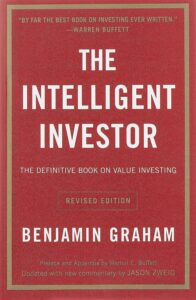Introduction
Behavioral finance is a rapidly growing field in finance that explores the influence of human psychology and decision-making behaviors on financial markets. In the past, traditional finance models have assumed that individuals are rational and make decisions based on all available information. However, behavioral finance theorists argue that this is not always the case. In fact, human emotions, biases, and heuristics often lead to irrational decision-making, ultimately affecting market outcomes. This influential concept has been widely studied and popularized by professors Lucy F. Ackert and Richard Deaves in their book Behavioral Finance: Psychology, Decision-Making, and Markets. In this blog post, we will take a closer look at the key concepts and ideas presented in this book.
About the Authors
Lucy F. Ackert is a Professor of Finance at Kennesaw State University in Georgia. She received her Ph.D. from Purdue University and has been actively researching and publishing in the area of behavioral finance for over two decades. Richard Deaves, on the other hand, is an Associate Professor at the McMaster University in Canada. He holds a Ph.D. in Finance from Queen’s University and has been teaching and researching in the field of behavioral finance for over 15 years.
Key Ideas in Behavioral Finance: Psychology, Decision-Making, and Markets
The book Behavioral Finance presents a comprehensive overview of the major concepts and theories related to behavioral finance. One of the key ideas introduced in the book is the concept of irrational behavior in markets. According to Ackert and Deaves, individuals often make decisions based on emotions, biases, and heuristics, rather than on rational analysis. This can lead to market inefficiencies, such as overreaction or underreaction to news, causing prices to deviate from their fundamental values.
Another important topic discussed in the book is the role of cognitive biases in decision-making. These are mental shortcuts or rules of thumb that we use to make quick judgments and decisions. However, they often lead to errors in judgment and decision-making, ultimately affecting market behavior. The book highlights various common biases, such as overconfidence, anchoring, and availability bias, and their influence on financial decisions.
Furthermore, the book covers the concept of market anomalies, which refers to situations where market behavior deviates from what is expected based on traditional finance models. These anomalies include the January effect, the weekend effect, and the momentum effect, which are all evidence of irrational market behavior. The authors argue that these anomalies are caused by human emotions, irrational decision-making, and other behavioral biases.
The book also addresses the implications of behavioral finance for investment strategies. Traditional finance models are built on the assumption of a market that is efficient and self-correcting. However, behavioral finance suggests that market participants are not always rational, resulting in mispricing of assets. This opens up opportunities for investors to capitalize on this mispricing through behavioral finance-based investment strategies, such as value investing and trend following.
Conclusion
Ackert and Deaves’ Behavioral Finance is a comprehensive and accessible introduction to the field of behavioral finance. The book challenges the traditional view of rational decision-making and provides insight into the role of human emotions and biases in shaping financial markets. It is a must-read for anyone interested in understanding how psychology and decision-making influence financial markets.
